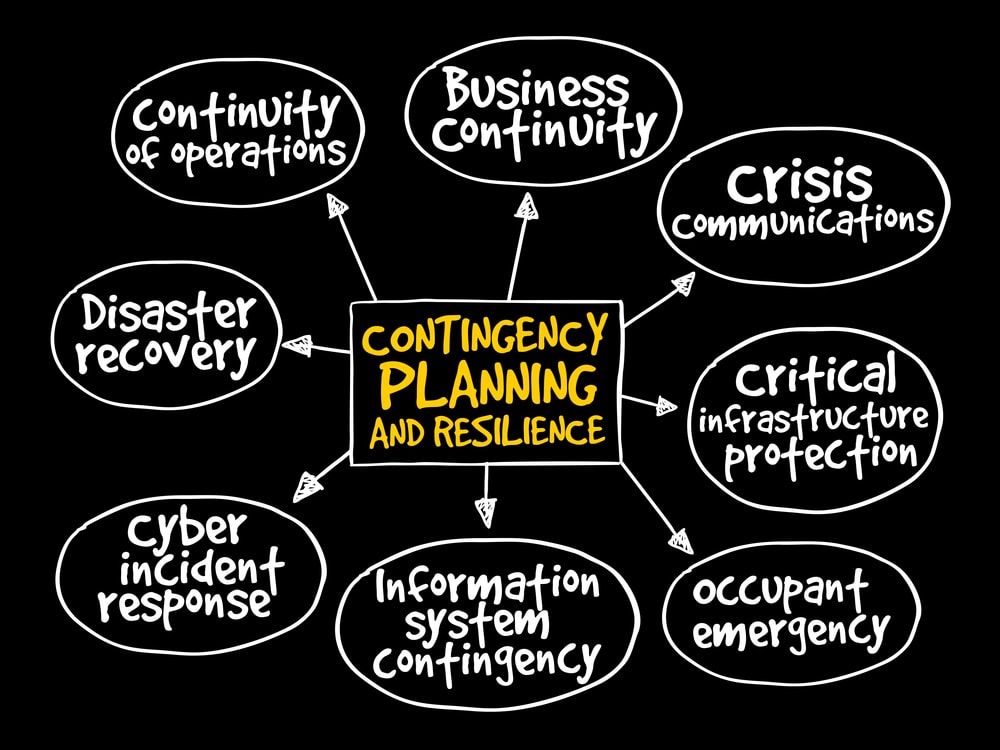The recent crisis has exacted a terrible toll on many small and mid-sized businesses (SMBs). The severity of the challenges SMB owners face due to the fallout cannot be underestimated. This reality has left owners of these businesses feeling pessimistic about the future of their company. (1)
SMBs will not see relief anytime soon. In fact, it could take more than five years for the sectors most affected by the pandemic to achieve 2019-level contributions to GDP. (2) Some, especially small businesses, will never recover.
While this scenario may sound grim – and it is serious – business failure is not a foregone conclusion. In fact, the same challenges that threaten SMBs also offer valuable lessons that SMB owners can leverage to ensure their company thrives again.
Planning Alone Is Not Enough
Successfully navigating a crisis is not just about making an emergency plan, carrying the right type and level of insurance or accumulating savings. In addition to these necessities, SMBs need to build a network of suppliers/vendors, bankers/lenders, investors, financial advisors, brand evangelists and loyal customers to support them during uncertain times. No company is an island. As Margaret Mead famously said, “Never doubt that a small group of thoughtful, committed citizens can change the world.”
PRO TIP: Even larger organizations can benefit from better planning! Having larger networks, including creating relationships with SMBs can extremely valuable especially when larger suppliers, vendors or partnerships are faced with high demands, regulations and/or red-tape.
Participation Is Mandatory
Gone are the days when passively monitoring the industry and markets was sufficient. Active participation is critical. Some small businesses struggled more and longer in large part because business owners were not aware of the existence of federal and state assistance programs as a result of the COVID pandemic.
This example perfectly illustrates why there is no excuse for business owners to remain in the dark about the state of the world, the markets they serve, how their customers are impacted and the experiences these customers are now craving.
So how exactly can one participate:
- Professional groups in LinkedIn, Facebook and elsewhere online
- Trade or industry groups, forums, roundtables and tradeshows
- Actively listening to social media conversations and joining in conversations
- Following executives in the industry such as large competitors as well as smaller ones
- Identifying thought leaders and influencers and reading/watching content
- Engaging with meaningful conversations with others in your industry as well as your market. This can include but is not limited to customers, vendors/partners, competitors, other providers who complement products/services your company offers, etc.
- Developing new relationships on an ongoing basis to understand the direction the world is headed in, what’s happening with technology and innovation and how this might impact your business, how new laws or regulations impact business and compliance, etc.
- Partner with a “mentor” in a larger company to learn how things are run on a larger scale, what lessons they learned, etc.
- Read and read often. Always be learning something new about your customers, your markets, your industry, technology, etc.
Get Inspired
SMBs in some of the industries that could have been decimated due to the recent crisis sailed through it with flying colors because they adapted to suit customers’ new needs and (in some cases) government mandates. Restaurants shifted to a curbside pick-up model. Yoga studios converted in-person classes to a virtual format. Pet grooming services offered low contact options. Educational programs converted in-person courses to virtual training. Business owners should look at both their industries and others for new ideas and creative ways to expand their services.
PRO TIP: Don’t ever get too comfortable with where things are now. Things are always evolving and changing and more rapidly than ever. Take the advice of those who work with technology: how can you future-proof your business? In other words, what can you adjust knowing the current conditions that can be rolled into future offerings later? Then re-evaluate what’s relevant and profitable as time goes on.
Develop a Resilience Plan
Why did SMBs struggle more than large businesses during the recent crisis? They lacked the capital resources to invest in staff, processes, technology and equipment. Ultimately, the organizations lacked the reserves necessary to carry them through difficult economic hardships. Other factors that put SMBs at a disadvantage include branding and lower margins.
Resilience depends on considering factors such as disasters, weather, social climate, epidemics, tech/cyber-attacks, pollution, crime, economic conditions and technology advancements/future-proofing. Attaining resilience involves more than preparing, reacting and evolving. Preparing adequately for resilience requires factoring the costs, time and staffing needs into overall infrastructure, community, stresses and shocks that be costly to a business.
PRO TIP: A resilience plan can be quickly enacted by having key partners in place. For example, if your business is heavy into cloud computing, what’s the plan for redundancy and to endure minimal downtime? Having the right partners in place can reduce this outage to minutes instead of days. In the same respect, an in-person executive meeting can be transitioned to a hybrid or virtual one if you have the right partner who, not only understands meeting planning but can quickly transition registrations, connect with the right technology to bring it to a virtual setting, etc.
Work Together to Grow Stronger
Crises offer a perfect opportunity for SMBs and large companies to work together. The benefits of teaming up include the following:
- Big organizations have access to more knowledge and resources, from training to networks to technology. Leadership at large companies should make it a point to offer their resources to SMBs. Examples include loaning an experienced member of their staff and making introductions to vendors or banks.
- Large companies should also get into the practice of supporting SMBs in their local community. Doing so can be inexpensive or even free of cost. Covering the cost of lunches for curbside pickup and highlighting an SMB on their social media platforms will go a long way in benefitting small to mid-size businesses.
- Securing the services of SMBs for parts and labor may temporarily reduce large organizations’ profit margins, but doing so offers advantages, as well. SMBs can prove valuable in being agile and cutting through red tape to bring about change faster. For this reason, big companies may very well enjoy cost-versus-time (or productivity) benefits as a result.
- Boutique firms – or SMBs with niche skills and/or products – can provide larger organizations with talented and trained professionals without costly overhead. Large organizations also get skilled talent without being forced to recruit and train them.
When SMBs get creative and remain open to different solutions and processes, they give themselves a very real advantage in keeping their business afloat and making a full recovery following crises.
Uncertain times call for creative thinking. Contact Gavel International to be inspired with solutions that connect and engage your people.
____________________________
SOURCES:
1) https://news.yale.edu/2020/05/01/survey-shows-pandemics-severe-impact-us-small-businesses
2) https://www.mckinsey.com/industries/public-and-social-sector/our-insights/us-small-business-recovery-after-the-covid-19-crisis
This article was last updated on November 28, 2022
- Why Content Is Essential for Driving Leads – and How to Create Content That Does - March 3, 2025
- Branding vs. SEO: Striking the Perfect Balance - February 10, 2025
- Why Executive Retreats Are Worth the Investment - January 6, 2025






